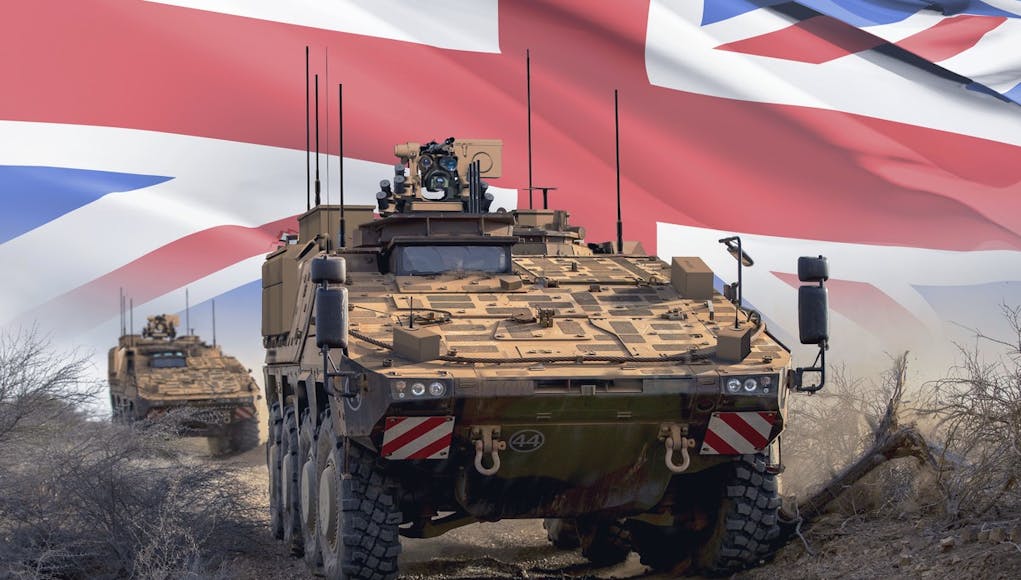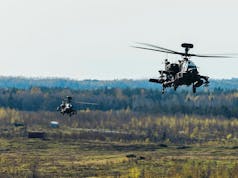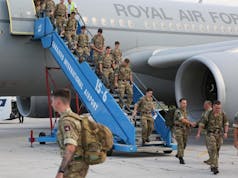Under the recently signed £2.3 billion contract between UK MoD and ARTEC – the Krauss-Maffei Wegmann (KMW) and Rheinmetall consortium – a significant portion of the manufacture of the 500 Boxer Armoured Vehicles for the Army’s Strike Brigades will take place at KMW’s UK subsidiary, WFEL.
The Boxer Mechanised Infantry Vehicle programme aims to source more than 60% by value of the vehicle content from UK suppliers and these 8 x 8 wheeled vehicles will be supplied in several different configurations, including an armoured personnel carrier, field ambulance, command vehicle and specialist carrier.
Delivery of the vehicles is expected to start from 2023 and this order marks the return of the UK to a European Defence Programme, having taken part in the Boxer project while in its infancy. Boxer is now on its way to becoming one of NATO’s standard vehicles.
James Heappey, the Parliamentary Under-Secretary of State for Defence Procurement, said:
“Investing in the Boxer programme is a prime example of Defence doing more than ever to level-up the UK economy through employment. By developing our relationship with WFEL, we are also supporting high-skilled jobs across the UK supply chain. This partnership ensures we engage with our people from the very beginning, connecting talented apprentices with the valuable roles Defence has to offer.”
As part of the preparations for this significant contract, WFEL say it has re-energised its Apprenticeship Scheme, with the first of its new Apprentice recruits recently joining the company to follow the path of Advanced Apprenticeships in Engineering Manufacture and keen to be involved in this 10-year contract.
“As well as the ongoing commitment to new Apprenticeships, WFEL is also actively recruiting for a substantial number of new roles to be based at its Stockport site, whilst engaging with both existing and new suppliers in anticipation of its contribution to both the North West economy and the Northern Powerhouse.”
Ian Anderton, Managing Director of WFEL, said:
“Our substantial involvement in the Boxer programme allows us to further develop our UK supply chain, in turn creating and protecting valuable UK engineering jobs and developing new skills for our staff and those of our supply chain partners. Working in close partnership with our KMW colleagues, we are both delighted and proud to be part of this transformational project for the British Army, with whom we have worked for many years.”














Boxer pretty much sums up all the problems with army procurement and doctrine over the past 25 years, thankfully we are getting something but all the billions wasted on FRES etc since 1998 to end up right back where they started is appalling.
Agree – the FRES fiasco cost something like £1 billion,why are the people that preside over these cock-ups never held to account ?.Good news all the same and it creates jobs but why is the journey so painful !.
The short and the long answer are both the same: public sector
They’re not though.
The Public Sector delivers most things on time and on budget.
The real answer is politicians.
If you give a programme with a 5-10 year lead time ever changing priorities, funding and production numbers you’re going to have problems anywhere.
Some of the Army’s changes in their AFV demands were understandable over the last 25 years i.e. overall numbers, role, armoured protection. Others less so. The Army’s armour programmes are possibly the worst out there as well.
While I’m all for blaming the politicians I think most of the cluster f*** that is FRES is the army generals fault. Not learning the lessons of Road side bombs in NI and thinking that some how they could get a vehicle with sufficient protection that could be airlifted. It’s telling the the US Army had much the same issue and shows that British Army doctrine is very much see what the Americans do and copy it.
I’m with you on this one. The army owns this screw up. Canceling Boxer because it could not be air lifted on a C130. Then when it was unacceptable to put British soldiers in unarmored infantry fighting vehicles they went for the Piranha 5 to save face. After that for some unknown reason changed their mind again to go for Ajax which is basically an improved version of warrior which was not as urgent. Germany will have had Boxer a decade before we get ours.
NO. We are given a budget and it should be spent economically. Wider geo politics is the area of politicians, but producing a balanced armed forces is the job of the military.
They are held to account – an ndex linked pension and maybe a knight-hood and the opportunity to do the same thing somewhere else?
The problems with FRES owe a lot to senior decision-makers moving the goal posts. So the process goes: Get given requirements, spend time and money developing a solution that will meet those requirements, have changed requirements foisted upon you, start again because the solution you spent all the money developing doesn’t suit the revised requirement…repeat ad nauseam. Then factor in the additional costs that arise from the delays to the programme of course. Actually pinning down individual responsibility isn’t so easy. Preventing this requires that a) the requirements are agreed up front and stay agreed. b)The cost is agreed up front by all parties (including the Treasury) c)everyone sticks to their commitments.
It’s no wonder people like Dominic are complaining.
Yes, sadly.
2023 they might start arriving before Ajax with CTA 40 !
Good morning all
The problem, has highlighted by the commentators below, is that this system (BOXER) should have been in service now – it isn’t and is not now due until 2023. The bigger problem is that those who made these decisions, or lack of decisions, during the late 90’s and onwards into the 2000’s are allowed to get away with it – no blame or accountability has been placed at anyone’s “foot”. With BOXER and other programmes within the MoD we see the same behaviours, most recently with the £1.35bn fiasco with regards the nuclear programme. Once again, no one will be held to account – a line will be drawn and “lessons learnt”.
Why do I make these points, well we have a review coming up soon, a review where the MoD will once again ask for more money – they have already sent their lobbyists out into the world stating what is needed for this and that, where we don’t have enough for x and its a scandal that we don’t have enough y.
If I were Treasury I wouldn’t, going on the MoD’s programme of record to date, give an extra penny – in fact I would challenge the MoD on every one of its programmes over the last 20 years to show where the taxpayer has received value for money. I would also look at the SRO’s who were responsible for those programmes that have either failed to deliver on time, or against the agreed requirements, or against the agreed scope and the agreed quality baseline and find out what jobs or roles they have within the defence machine now.
To the readers, have a look at the MoD website for appointments of SRO’s for programmes over the last 10 years, the information is there, then look at the success of the programme and then look at where those individuals are now and what excuses were used to explain why their programme were either late, over cost or didn’t perform against the requirements as requested by the user.
Today we are seeing the MoD spin BOXER being delivered by 2023 as good news, I leave it to you whether you see it as the same or as a failing of the system – a system that has wasted 25 years and £1bn going full circle.
I agree, I think the 1990s was a bad time for defence procurement because there was a sense of not really having an existential threat to worry about, together with the industrial disruption that happened in the aftermath of the Cold War, when defence budgets were slashed and projects shelved.
A lot of the problem programmes can be traced back to then, when everything became gold plated and concerns about adequate numbers went out the window!
Not understanding the complexity of EU industrial deals between states, could I be wrong to suggest that the post-Brexit UK may be an inviting temptation to relocate some mainland European industry, under the guise of ghost nameplates? The idea Britain will be free to trade globally without the tight restrictions imposed by Brussels, could be to the advantage of UK defence? I’m sure many German and French envy the UK’s new opportunities that will be open to them. If I were an EU industrialist, I’d view buying up UK companies to allow greater freedom. As long as these companies, build new factories and employ British people, I’d be happy. The fact the UK is geographically close to Europe, means closing down and moving out worries that plagued the Brexit period, will be for the large part over, thus ensuring the security of employment? Nissan recently, it is alleged, said a post-Brexit Britain could offer new business opportunities, that had hitherto not been fully recognised?
I’m not sure what these ‘tight restrictions’ are? International sanctions on pariah or downright dangerous states, or the export of sensitive military technologies tend not to be restricted to the EU, if that’s what you mean. The US, above all, champions these. Then there are the French, Swedish and German armoured vehicle industries, which are are far more successful than the UK’s have been – heck even Finland, Italy and Switzerland export more AFVs than the UK. More to it than these mythological ‘tight restriction’ methinks.
Tight restrictions are one of the key reasons for leaving the EU. I believe it’s the time it takes to get deals past through Brussels, that is at the heart of this issue. I don’t think there is anything mythological about the UK and WTO having a real advantage over current EU procedures, in certain transactions.
This is more fantasy island stuff about the EU works. Deals do not need to be passed by Brussels, export licences are managed by member states, in the care of the UK by the DIT. Oversight is provided by the Joint Export Control’s Unit in the Cabinet Office and the Arms Exports Controls Committees of Parliament. The overarching legislation is the Export Control’s Act of 2002, which includes “The Common Rules Governing the Control of Exports of Military Technology and Equipment”. Once a year each member state reports to the Council of Ministers on its implementation of the Common Rules. That is it, there is no direct involvement of Brussels during any arms deals, licensing and oversight are all national responsibilities.
As far as EU regulations go there are four. The ‘Common Rules’ are currently part of UK law as they are included in the Export’s Control Act 2002. The common rules cover our international commitments to things like upholding UN sanctions and arms control treaties and preventing nuclear proliferation and illegal trafficking in arms, which the UK would have to do anyway. The other regulations are the so-called Dual Use list which was introduced after the Arms-to-Iraq scandal, and sets out non military products that could potentially be used for military or terrorist purposes and thus require an export licence, the so-called Torture Regulation, which is another list of items that could be used for torture and capital punishment and a Council of the European Union Directive on the transfer of military equipment between member states. To re-iterate, none of these require Brussels to approve any deals, they simply require member states to report to the Council of Ministers each year on how they implemented them.
Exactly. If anything the UK exports more arms to dubious regimes than your average EU state. UK AFV manufacturing is at a nadir (well perhaps coming out of one now) because of underinvestment from producers and droughts in MOD procurement. If even one of Boxer, Ajax, and Warrior upgrade/replacement programs (can’t remember all the relevent acronyms, suggest FRUKUP as an umbrella term) had been ordered even vaguely on-time, there would probably still be a major production facility extant and we wouldn’t be in the sorry state of “aiming” for 60% UK content. By the way I’ve heard that the facility in Wales making AJAX is very much “assembly” rather than manufacture, so I’m not sure I count that as a proper plant, I hope Telford will be more substantive.
?
Think we have reached peak Maurice
It will be interesting to see what transpires in the next few years, and if my gut feelings come to anything? Good night.
Are you proposing we sell military assets to even less reliable countries? We already trade with Saudi whilst Germany won’t. In fact not many countries we won’t sell arms to, if we get a half chance.
Our lack of exports has more to do with timing of upgrades (how that ends up timed with buyer needs) and gold plating. The EU member states tend not to gold plate their gear, which makes them cheaper. The US gold plated but has the economy of scale to make them cheaper. We have worst of both worlds from export perspective, meaning expensive.
From a defense perspective, I want us to have the best gear we can get, I don’t care about UK jobs etc, as it just doesn’t create enough over long term to matter and there are cheaper ways for the government to create jobs.
Brexit is focusing attention on opening up new markets in regions where Britain has traditionally not had a major foothold, or gave it up because of he ease of exporting within the EU, or collaborating on European projects. Since the 1980s we have been more and more Euro and Middle East centric in our export strategies. Also the UK defence budget is no longer an anchor for the defence industry. I think the Strategic Defence Review process has been very damaging – politicising procurement decisions and making the process very rigid, everyone is waiting for the the next 5 SDSR year cycle before making any decisions. The flexibly the MoD and services once had to work at their own pace on key programmes that do not harmonise easily into 5 year leaps seems to have been lost. They there is the procurement process which has increasingly sought to bundle purchases around hugely inflated programmes with grand titles. These move at glacial speed because they are far too broad and encompassing, resulting in massive bureaucratic exercises which produce very little output – maybe one platform like Ajax from FRES, or some ridiculous overblown process to deliver a UAV like Watchkeeper. All this hot air, endless conferences and flying reams of strategy papers is not allowing industry or the end user to get down to the nitty gritty of specifying a narrow requirement and building some kit to meet it. Decoupling politics and policy from decisions on equipment, and freeing the MoD, services and industry to work together is key. Lastly, we simply need to spend more of the defence budget in the UK. Period.
Very interesting observations James. I’ve always wondered why defence procurement was so laboured and expensive, remember the Nimrod redesign? Many successful companies develop product through very professional ‘Programme Management’, especially in the auto industry. An ‘into production deadline’ is established and all departments have to deliver at vital gateways. Invariably, these critical timelines are met, resulting in a job one being within timing envelops. To be fair, the carrier consortium, appeared to adopt a modern programme managed process? We can only hope the Type26/31’s will be completed in a similar fashion, and not burdened by political meddling. The poor MOD has had a phalanx of Defence Ministers, none of whom have lasted very long , which must have slowed up the government’s input? Maybe, the current occupant can stay long enough to get the procurement process sorted.
https://www.janes.com/article/94018/uk-releases-key-user-requirements-for-mfp
I had presumed the AS90 replacement would be the L52 Howitzer Boxer variant and come out of the budget for Boxers already ordered. Judging by the Janes’ article it seems it will be separate programme or at the very least an additional order of the Boxer type.
Given requirements stated does anyone with knowledge know which current systems meet the brief?
I would have thought Archer would be the favorite for it. I think putting a howitzer on the back of boxer will destroy the chassis, but I do see the flexibility benefits if it means ordering more boxer.
The Archer system would be cheaper than a Boxer. However, it has limited off road capabilities compared to Boxer and has limited gun traverse. The Boxer with the artillery gun module (AGM) has fewer limitations. The turret is fully automated and is a development of the PzH2000 system. It has a very fast set up and “run away” times compared to other systems. See the link below which is a couple of years old.
http://www.military-today.com/artillery/boxer_rch155.htm
The only downside is the overall height of the vehicle, which is about 3.5m so it just about gets in a C17. The Boxer with the AGM uses the longer 52 calibre barrel and has had no issues firing the various types of extended range shells.
The downside of the Boxer RCH155 is that it is extremely expensive. Very expensive gun on a very expensive chassis.
Agree and Archer costs a lot less than a Boxer 155 howitzer, you could probably get 2 or 3 Archer type systems for 1 Boxer howitzer.
Hard to get info on prices, but from what i have been able to read Archer seems to cost about 3m and boxer 155m is estimated from 6m to 9m. Since it’s mobile artillery and not a frontline vehicle, armour is not high on the list of requirements.
The new BAE archer is based on a standard MAN truck design so maintenance should be easier and cheaper since this truck is already used by the armed forces
I’ve seen 11m for the RCH155
Perhaps they could just upgrade the gun on AS90 joining the American extended range M109 project, don’t think the vehicles have excessive miles on hulls?
I think the marketing team are trying to hard with that union flag. Boxer is German. They did the same thing with F-35s. Which are American.
No use putting a British flag behind them, trying to palm them off as something we made.
Boxer was (and is) a multi-national project, which the UK was a part of right from the start, but then we pulled out in 2003 in favour of FRES. Now we are back to Boxer, having wasted time and money on FRES. At least they are going to be manufactured here.
Yes, just like the Eurofighter was a multi-national project, (really it was British). Not saying the Boxer won’t be a good vehicle, but the point still stands.
You mean Aldi is not British ?
Why are they not being built by RBSL which is a British company even though it is 55% owned by Germany’s Rheinmetall, rather than a 100% owned German company?
Is this another case of “anyone but Bae” policy at the MoD? Let’s buy from a foreign company rather than investing in Britain?
They are being built by RBSL as well. See the Jane’s YT link below that outlines 8% of build in Germany to train up UK teams then rest built between Stockport (WFEL) and Telford (RBSL)
https://youtu.be/AdgZ_YgK6k4?t=448
Leaves me mighty puzzled. If a “significant portion” is to be built by WFEL, what does that leave for RBSL. And really, does the UK order warrant two production sites?
I guess I should listen to the video. Thanks for the link.
Probably not much more to be extracted from the video. Stefan Lishka, MD of ARTEC who was providing the information didn’t give any splits on business. I suppose “significant portion” in the article above could mean anything from 25% through to 75%, but from the article above I presume the split is being driven by govt to spread the work around as part of the broader “leveling up” program. If we want to be optimistic, it might also mean govt expects to be ordering more than the current ~500 units.
Let’s hope so!
I read it to mean RBSL for final assembly/integration, WFEL for metal fabrication. Could be wrong …